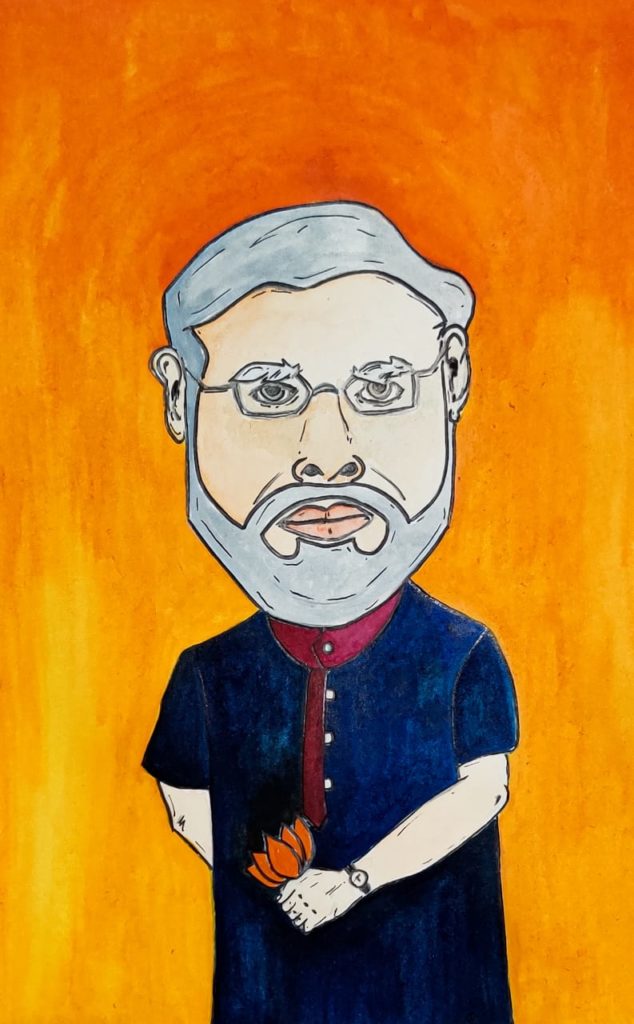
The 23rd of May 2019 saw the viciously fought election campaign finally come to an end that took the entire country by surprise. The BJP-led NDA got the clear mandate of the people of this nation, with a mammoth win. While this was in line with the predictions of most exit polls, it was an unprecedented win for Amit Shah & Co. With a ragtag opposition scrambling to declare a Leader of Opposition and figure out what exactly went so terribly wrong for them, the Prime Minister and his party have much to celebrate.
Break-up of the Seats
The Bharatiya Janata Party, led by the incumbent Prime Minister Narendra Modi and his associate, party president Amit Shah, managed to sweep the polls and drench it with its saffron juggernaut across the country. The party amassed an incredulous 303 seats out of the total 542 contested seats, giving it an absolute majority in the Lok Sabha. Consequently, the National Democratic Alliance (NDA), the BJP’s coalition with the right-leaning parties racked up a mammoth 351 seats, surpassing 2014’s number of 336 seats.
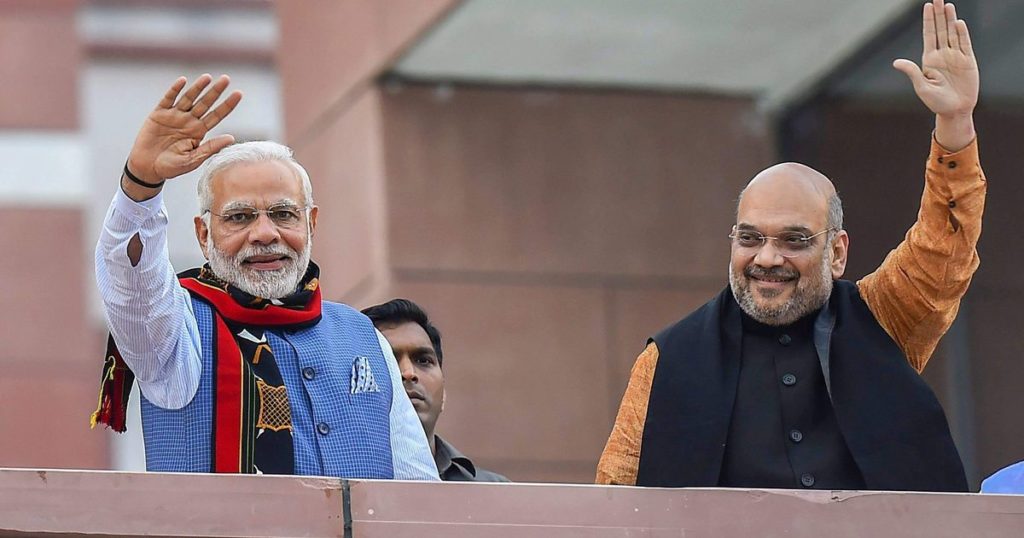
Congress, on the other hand, under the leadership of Rahul Gandhi, the scion of the Nehru-Gandhi family failed to capitalize on the shortcomings of the NDA rule and was only to secure only 52 seats. Their coalition, the United Progressive Alliance (UPA) has a tally of 95 seats. This comes as a shock to many, as the party was looking confident after recent turnarounds in assembly elections in Rajasthan, Madhya Pradesh, and Chattisgarh. Rahul’s loss to BJP stalwart Smriti Irani in the party’s stronghold Amethi rubbed salt into the party’s wounds and woes, to an extent where reports have surfaced about Rahul’s resignation.
Perhaps, the face of this election was the Mahagatbandhan, an anti-Congress, anti-BJP alliance formed and led by two arch-rivals in Uttar Pradesh, one of the most crucial states which have the notoriety for deciding the fate of the General Elections. Mayawati, the leader of the Bahujan Samaj Party and Akhilesh Yadav, who leads the Samajwadi Party, between whom the power in UP tussled till 2017, came together to drive Narendra Modi and the BJP out of power, along with Ajit Singh of the Rashtriya Lok Dal. But even such a strong alliance was not able to slow down the BJP, who was able to trump the partnership as they cruised to victory in 62 seats out of the 80 seats in UP.
Demographics of the Seats
The Mahagatbandhan aspired to exploit the hegemony in politics that is enjoyed by upper-caste Hindus. This has been the case ever since India attained independence, and the last few decades have seen the rebellion and rise of the other caste groups in Indian polity. BSP, being a veteran in forming alliances and representing the underprivileged, lower-caste Hindus, eyed to steer the seats in UP away from the BJP with the Samajwadi Party, who represent the OBC-Yadav faction of the population in the state.
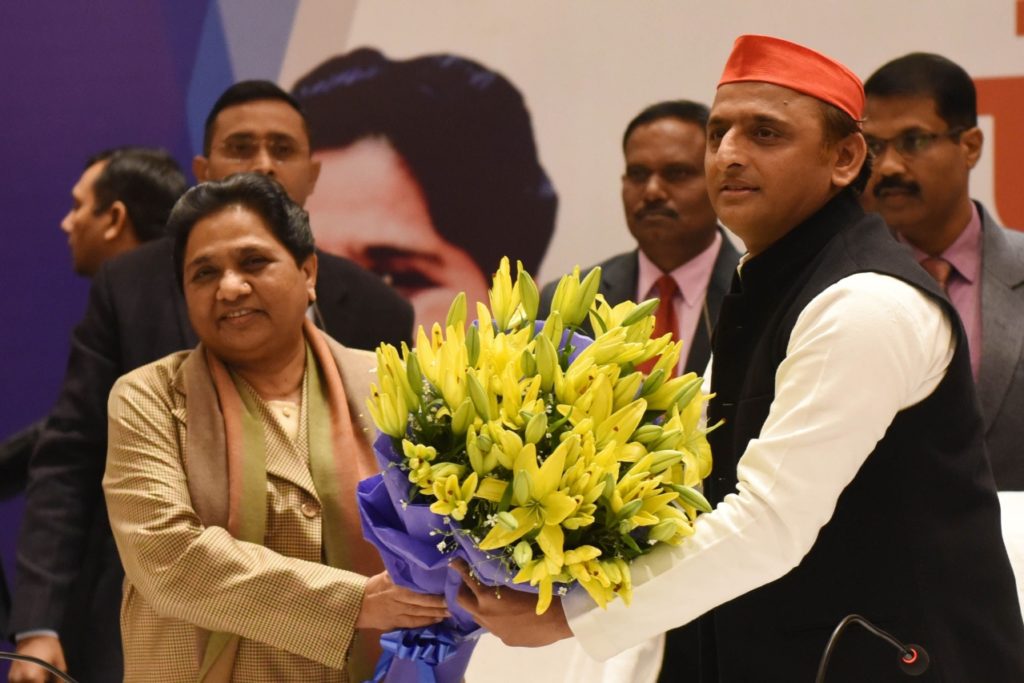
The BJP in 2014, shattered these norms that hitherto were deeply entrenched in the political scenario of UP, managed to keep their vote bank of Jats in western UP, the aforementioned Yadavs and Dalits, despite them being the strongest suit of the caste arithmetic of the namesake “Grand Alliance”, mainly due to the “Modi” factor. Despite their hostility towards Muslim candidature, people simply prefer the 68-year-old’s campaign central to Hindutva, welfare schemes for the poor and nationalism.
Despite the fact that Muslim representation in the Parliament has dropped to its lowest tally in decades after Modi’s ascent to power, those in disagreement with his method of working on the Indian economy voted for him, for they see him as the best man to lead the country at present. No politician in the country can match his aura and magnanimity, which is the reason for his victory despite the rampant rise of right-wing extremists pulling India’s delicate and precarious secular fabric apart, Modi was given a second term.
The Opposition
The biggest contender fighting for prime ministership was Rahul Gandhi, a fourth-generation member of India’s oldest political dynasty and the leader of the Indian National Congress. However, despite being actively involved in politics since 2004, Rahul’s image as a leader is frail, independent and weak, especially when put with Modi, who is labeled by analysts as a “larger than life” figure. This time around, Rahul contested the elections from two constituencies, their permanent seat of Amethi in UP, which is deeply entrenched within the strongholds of Congress, and Wayanad in Kerala, a state which has managed to isolate itself from the saffron wave of BJP. While the victory in Wayanad ensured that Rahul is going to be an MP, the loss of Amethi to the BJP bludgeoned the already derailed performance of the Congress.
The opposition’s outcries of PM’s jingoistic mindset following his military action during the standoff with Pakistan, the controversy surrounding the Rafale deal and unemployment were eclipsed by Modi’s towering image as a strong, popular leader. The military action accentuates the belief that the government in Delhi is a muscular one, and will take the unrest in Kashmir and take Pakistan’s terror attacks on the Indian Army as a casus belli. This election also saw the equations and tactics of caste-based politics, along with the dynastical approach of candidature as an anathema to the public.
Important Seats
The 2019 General Elections saw many political bigwigs and celebrities face each other directly. Some key seats include Varanasi, which was won by PM Modi, Amit Shah’s Gandhinagar and Thiruvananthapuram – which was retained by INC’s Shashi Tharoor.
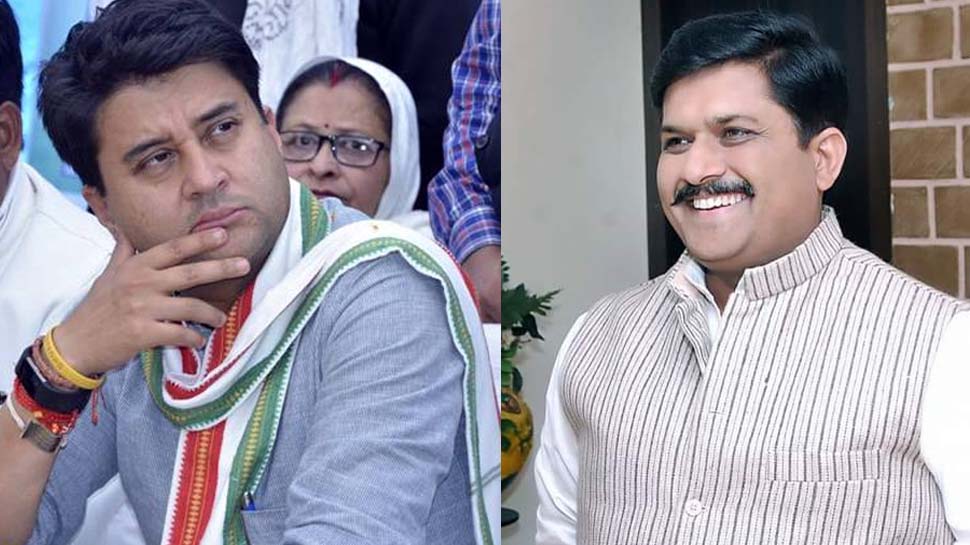
Many traditional bastions and strongholds were lost to the NDA, as a result of the Modi wave that flooded the country, stronger than before. A former supporter of Jyotiraditya Scindia, KP Yadav ousted the incumbent MP and won Madhya Pradesh’s Guna which was considered a stronghold for the Scindia family, since the time of erstwhile Maharani Vijay Raje Scindia. Kanhaiya Kumar of JNU fame and Union minister Giriraj Singh contested for the Begusarai seat in Bihar. Despite having comedians, actors and other supporters massively campaign for him both on the ground and online, Kumar lost by a margin of 4 lakh votes.
Smriti Irani, however, proved to be the real giant killer by defeating Congress President Rahul Gandhi in the Gandhi bastion Amethi. Irani defeated Rahul Gandhi, who will now represent Waynad in the Lok Sabha by a margin of 50,000 votes.
What Worked and What Didn’t
It is clear that the Opposition, despite consolidating all its efforts to remove Modi, failed miserably. Amongst its many reasons, the one that stands out is the lack of clear leadership. Despite having many tall leaders in their support, none of them was a viable option to become the Prime Minister, considering the relatively small seats that they had hoped to gain individually. Moreover, this coalition – which saw many former rivals like the SP and BSP come together, making it clear to the voters that the ideology of this alliance was only to defeat the BJP.
The negative campaigning of the Congress and its allies also didn’t help. Their launch of the NYAY initiative was also too late to make an impact on the voters. Despite all the allegations against the PM, one that did not resound with the Indian voter is that he is dishonest, that translated into the failure of the ‘Chowkidar Chor Hai’ campaign concerning the Rafale issue. Personal attacks on the PM also didn’t sit well with the voters. The BJP also had a more professionally organized campaign, holding massive rallies countrywide and making full use of social media to their advantage.
Overall, a lack of vision, leadership, and substance, coupled with a poorly organized campaign caused the opposition to be reduced to record low seats.
The Southern States
The Southern States barring Karnataka remained to keep the BJP and its allies away from their representation. While the South has traditionally been wary of the nationalistic agenda of the BJP with prominence given to Hindi, everyone predicted entry into the Southern states for the party given the Modi wave. The Southern identity seems to have been impervious to the Saffron logic, with regional parties holding the key to most of these states.
BJP’s most successful state in the South is Karnataka, where it won 25 seats out of the total 28, reducing the JDS and Congress to a seat each. Former Prime Minister H Devegowda and Leader of Opposition Mallikarjun Kharge were also defeated in their respective constituencies. The most-watched constituency of the state, however, was that of Mandya where chief minister HD Kumaraswamy’s son Nikhil contested against late Congress leader Ambareesh’s wife, Sumalatha who stood as an independent candidate, with assured support from the BJP. Despite fielding two other independent candidates with the same name to cut votes, Nikhil lost by a margin of 1 lakh votes. This decimation of the JDS-Congress alliance in the state has mostly to do with the unhappiness against the current state government. Congress also did not field candidates in their traditional strongholds, giving way to their ally’s candidates to lose.
In Kerala, despite the BJP gaining numbers in terms of vote share, it was unable to win a single seat. Many assumed that the Sabarimala issue would play a significant role in these elections, where the BJP has openly declared support to the locals and the Devasworm Board – but it failed to have any real impact. The more important observation, however, was that the Left Democratic Front was decimated in the only state it has any real presence left. The Congress managed to grab 15 seats in the state – the highest number of constituencies won by the Congress from a single state.
In Tamil Nadu, this was the first election fought without messianic politicians with a cult-like following, due to the demise of both leaders – Jayalalithaa and Karunanidhi. The AIADMK-BJP didn’t have a single win, and the DMK-Congress alliance picked up all seats but one. The rise of MK Stalin, who expertly led such an ideologically diverse coalition to clear victory is seen as a prospective candidate for the role of Leader of Opposition.
In Telangana, K Chandrashekhar Rao’s TRS swept the state by winning 9 out of the total 13 seats. The TDP was reduced to 3 seats, with Jaganmohan Reddy’s winning both the state assembly and Lok Sabha.
The Future
Whilst history has repeated and even surpassed itself this time, Modi has undoubtedly entrenched himself as one of the most powerful political figures in independent India. His back-to-back victories with an absolute majority make him the third PM, after Jawaharlal Nehru and his daughter Indira Gandhi. But the jubilant honeymoon period, which every newly elected government enjoys, will end on a more unpleasant note, as Modi has an uphill task of leading the nation from defence, financial and internal perils.
Not only he has to deal with the precarious situation of Kashmir, whose governing laws Modi vehemently detested and aspired to change in his election manifesto, he also has to hold the Indian economy, which currently is marred by unemployment and a troublesome agrarian sector, from plummeting.
As India moves ahead to forge a stronger tomorrow, the polarisation that this election saw is sure to leave its scars on the polity. With campaigning reaching personal attacks, agendas, and ideologies forgotten to gain votes and violence taking the lives of many – the price that India is paying to ensure that our democracy remains robust has reached a new high. With no powerful opposition left, it is essential for political parties to introspect and understand how they can effectively act to keep the Modi 2.0 government in check. As citizens of the country, we must ensure that in the next five years, the mandate that the country has given does not go in vain and our promises of Sabka Saath, Sabka Vikas, and Sabka Vishwaas are fulfilled.
Written by Rishi Kant and Siri Rajanahally
Graphics by Ansh Bhaghania and Yashovardhan Parekh
Featured Image by Ashirwad Ray
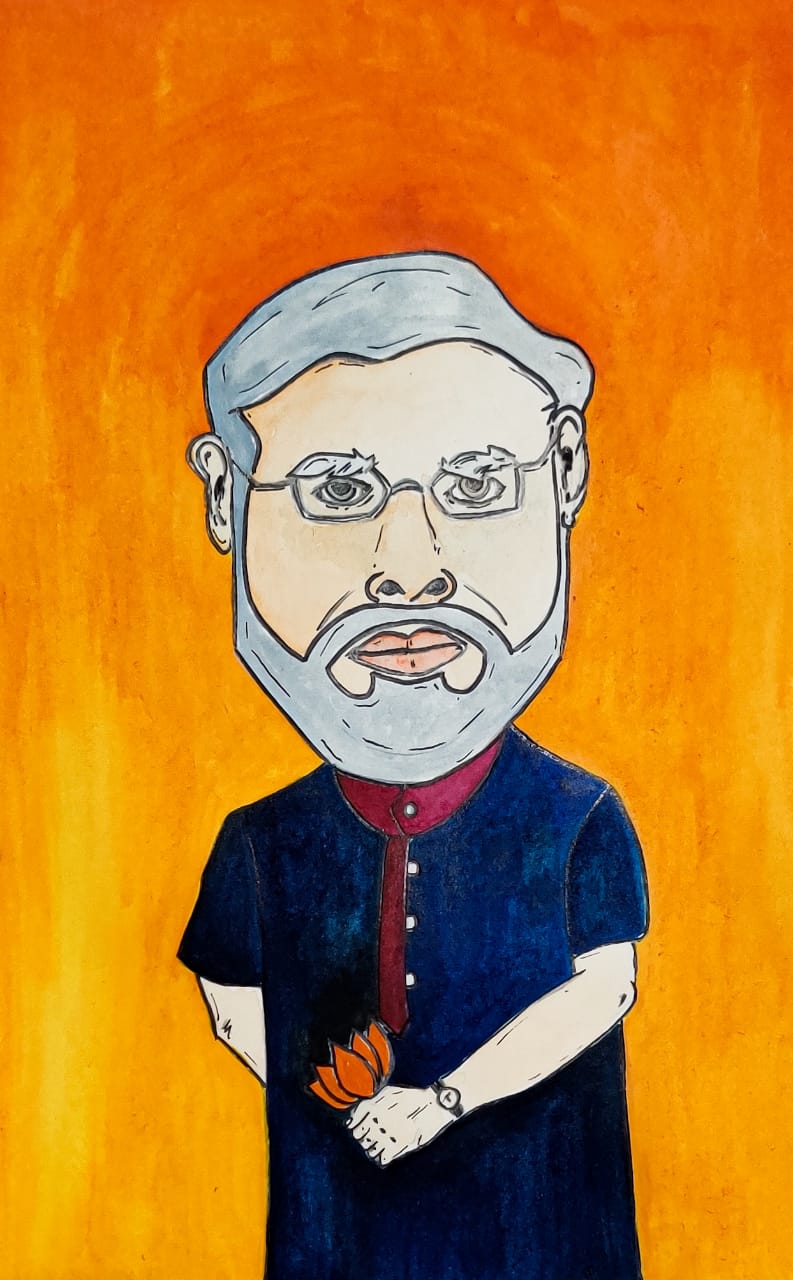
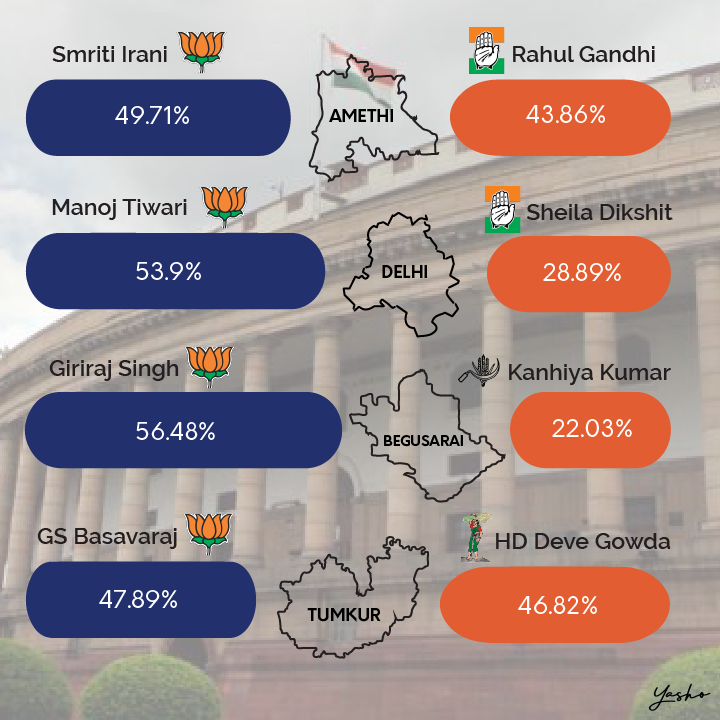
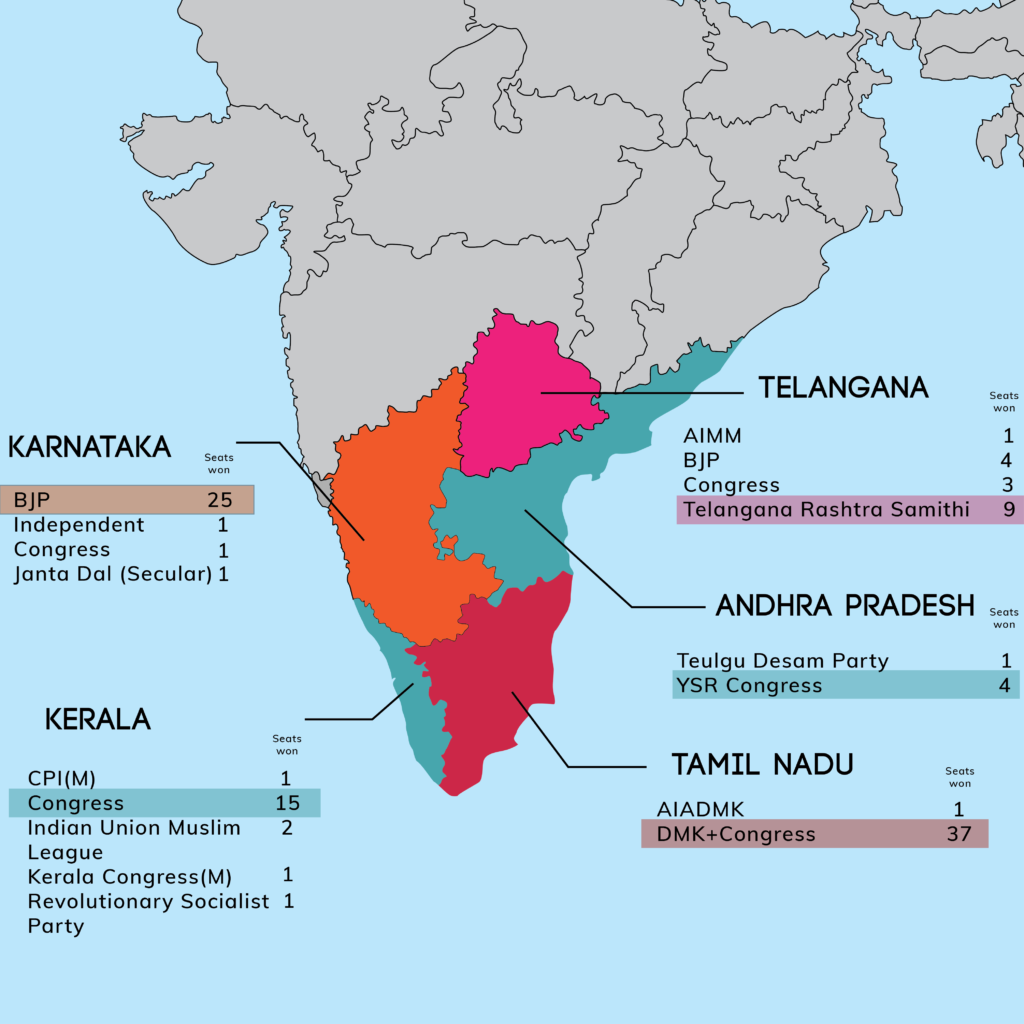
Leave a Reply
You must be logged in to post a comment.